India has many border-related disputes with its neighbours, China and Pakistan. Occasionally, these border disputes caused a warlike situation to flare up between these nations.
In May 2025, India launched "Operation Sindoor" in response to a deadly terrorist attack in Kashmir that killed 26 Indian tourists. This exchange has intensified tensions along the Line of Control (LoC), the de facto border between India and Pakistan. It separates Indian-administered Jammu and Kashmir from Pakistani-administered territories.
On the other hand, India claims that the Line of Actual Control (LAC), which is the notional border between China and India, stretches over 3,488 kilometres. In this article, we have published the difference between LOC and LAC. Before coming to the actual topic, we should know the full form and meaning of LOC and LAC.
Check Out| History of Pakistan Occupied Kashmir (POK)
What is Line of Actual Control (LAC)?

Source: IASGyan
The Line of Actual Control (LAC) is the unofficial boundary between India and China. It stretches about 3,488 kilometres from Ladakh in the west to Arunachal Pradesh in the east.
However, China considers it to be around 2,000 kilometres long. This line separates Indian-controlled areas from Chinese-controlled territories, including Aksai Chin—a region administered by China but claimed by India.
History and Conflicts
In 1962, India and China fought a war over border disputes. China emerged victorious and took control of Aksai Chin, an area of about 40,000 square kilometres. The war resulted in approximately 1,383 Indian soldiers killed and 3,968 captured .
In June 2020, a deadly clash occurred in the Galwan Valley. Twenty Indian soldiers lost their lives, and China reported four deaths, though other sources suggest higher Chinese casualties.
Indo-China Border Length
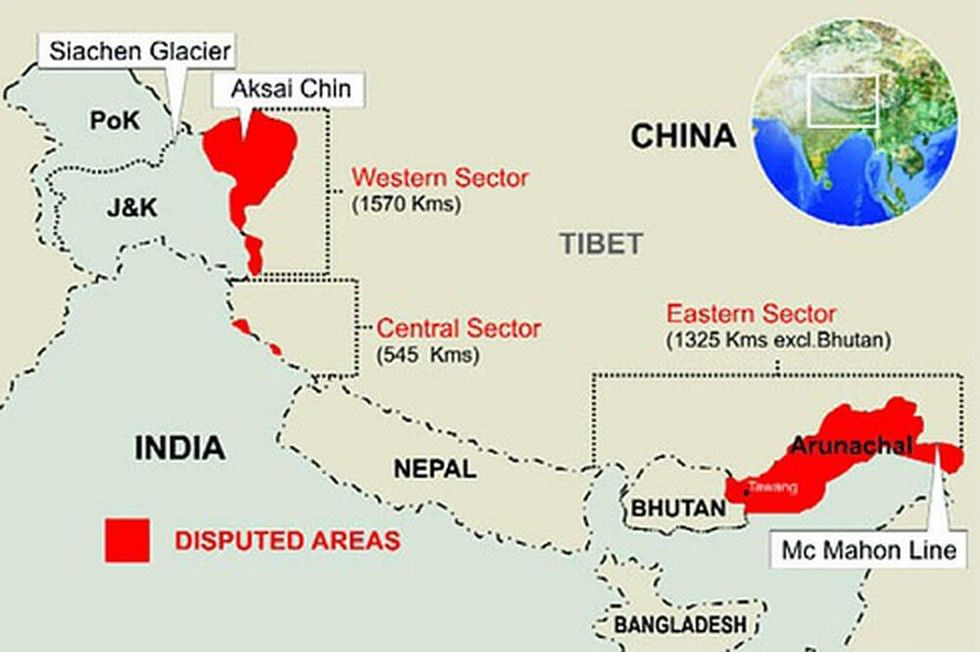
Source: Vajiram & Ravi
The India-China border stretches approximately 3,488 kilometres and is divided into three main sectors:
1. Western Sector (Ladakh)
This is the most contentious part of the border. It includes Aksai Chin, a region administered by China but claimed by India. This area has been the site of significant conflicts, including the 1962 war and the 2020 Galwan Valley clash.
2. Middle Sector (Himachal Pradesh and Uttarakhand)
This sector is relatively peaceful compared to the others. It covers parts of Himachal Pradesh and Uttarakhand. While there have been occasional disputes, this area has seen fewer confrontations.
3. Eastern Sector (Sikkim and Arunachal Pradesh)
This sector includes Arunachal Pradesh, which China refers to as "South Tibet" and claims as its own. The region has been a point of contention, with both countries asserting sovereignty over it.
| State | Border Length (km) |
|---|---|
| Jammu & Kashmir | 1,597 |
| Himachal Pradesh | 200 |
| Uttarakhand | 345 |
| Sikkim | 220 |
| Arunachal Pradesh | 1,126 |
| Total | 3,488 |
Security Measures by India
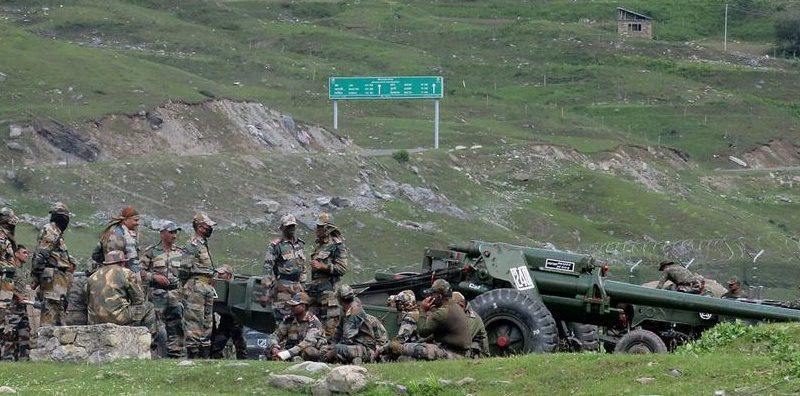
Source: The Wire
To safeguard the LAC, India has taken several steps:
- Infrastructure Development: Building roads, bridges, and airstrips to ensure better movement of troops .
- Surveillance: Using drones and satellites for constant monitoring.
- Military Deployment: Increasing the presence of troops and advanced weaponry along the border.
- Diplomatic Talks: Engaging in discussions with China to reduce tensions and prevent conflicts.
How was the Line of Actual Control Built?
The LAC is a notional demarcation, not a legally recognised international boundary, and is divided into three sectors:
- Western sector (Ladakh)
- Middle sector (Uttarakhand, Himachal Pradesh)
- Eastern sector (Arunachal Pradesh, generally following the McMahon Line)
The concept of the Line of Actual Control (LAC) was first introduced by Chinese Premier Zhou Enlai in a 1959 letter to Indian Prime Minister Jawaharlal Nehru, describing it as the line up to which each side exercises actual control.
However, Pandit Nehru rejected this idea, arguing that there was no clear agreement on the ground realities and that the concept lacked historical validity.
1. Post-1962 Sino-Indian War
- The LAC became a de facto boundary following the 1962 Sino-Indian War, serving as an informal ceasefire line between Indian and Chinese forces.
- After the war, China claimed it had withdrawn 20 km behind its perceived LAC of November 1959, but India continued to dispute this claim and the vagueness of the LAC’s definition.
- The LAC was not demarcated on the ground or on mutually agreed maps, leading to ongoing ambiguity and disputes.
2. Formalization and Agreements
The term "Line of Actual Control" originally referred only to the western sector, but by the 1990s, it came to mean the entire de facto border between India and China.
India formally accepted the concept of the LAC during Prime Minister P.V. Narasimha Rao’s visit to Beijing in 1993, resulting in a bilateral agreement to respect the LAC and maintain peace, though the line itself still remained undemarcated.
Attempts to clarify the LAC through map exchanges have been made, especially for the middle sector, but significant disagreements persist, particularly in the western sector.
Efforts Taken to Manage Border Disputes
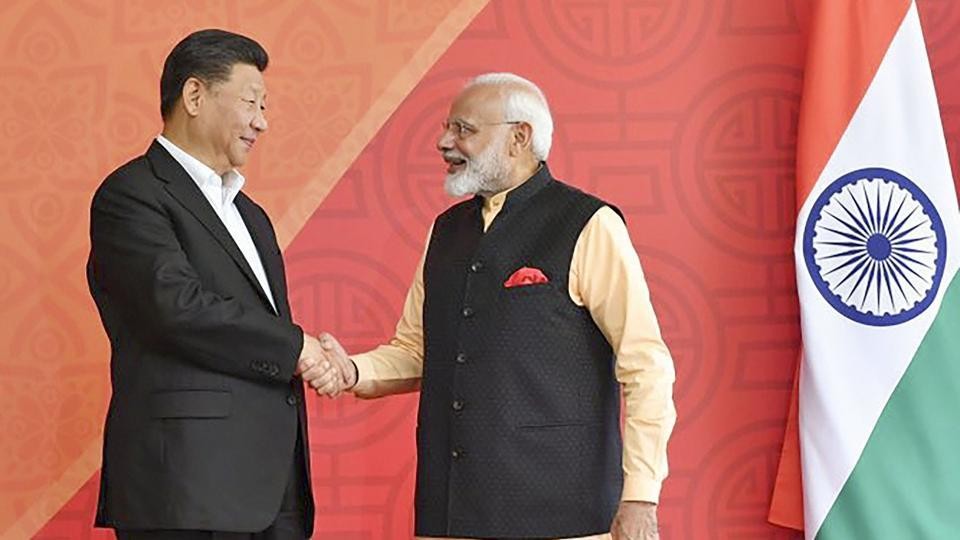
Source: Economic Times
To manage and resolve border disputes along the Line of Actual Control (LAC), India and China have engaged in multiple rounds of talks and established several key agreements:
1. 1993 Agreement on the Maintenance of Peace and Tranquility
Signed in September 1993, this agreement aimed to maintain peace along the LAC by both countries agreeing to respect the status quo and avoid military confrontations until a final boundary settlement is achieved. Wikipedia
2. 2005 Political Parameters and Guiding Principles
In April 2005, both nations agreed on a framework outlining broad principles for resolving the boundary dispute. This included mutual respect for each other’s territorial integrity and a peaceful, step-by-step approach to settlement.
3. Confidence-Building Measures (CBMs)
Over the years, several CBMs have been implemented to reduce tensions:
-
Establishment of military hotlines for direct communication.
-
Creation of buffer zones in contested areas to prevent clashes.
-
Protocols for managing troop movements and disengagement in sensitive regions.
4. 2024 India-China Border Patrol Agreement
In October 2024, India and China reached a significant agreement to ease hostilities resulting from skirmishes, particularly in the Galwan Valley. This accord restored patrolling rights in areas like Depsang Plains and Demchok, aiming to resume pre-2020 patrolling operations and stabilise relations.
Must Read| What Are Kamikaze Drones? Check their Range, Cost, Origin Country and Features
What is Line of Control (LoC)?
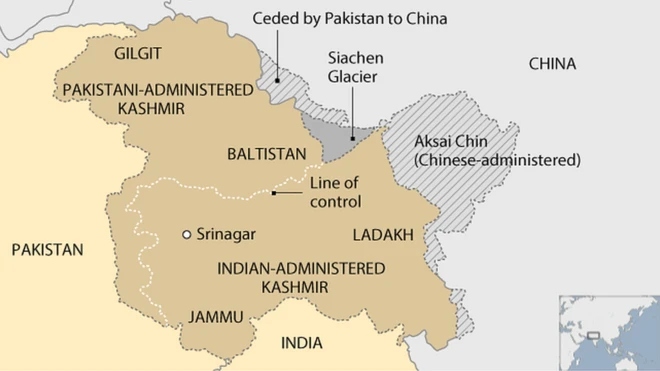
Source: Al Jazeera
The Line of Control (LoC) is the de facto border separating Indian-administered and Pakistani-administered regions of the former princely state of Jammu and Kashmir. Established on July 2, 1972, following the Simla Agreement after the Indo-Pakistani War of 1971, the LoC spans approximately 740 to 776 kilometres. While it serves as a military control line, it is not recognised as an international boundary.
How was the Line of Control Built?
After the partition in 1947, Pakistani tribal militias invaded Kashmir, prompting the Hindu ruler of Jammu and Kashmir to accede to India. This led to the First Indo-Pakistani War (1947-1948).
A UN-mediated ceasefire was declared in 1949, resulting in the establishment of a ceasefire line through the Karachi Agreement. This ceasefire line demarcated the positions held by Indian and Pakistani forces as of January 1, 1949, running from Manawar in Jammu to the glacier area in Ladakh.
Ceasefire Line to Line of Control (1972):
The ceasefire line remained largely unchanged despite further conflicts, including the 1965 war and the 1971 war (which led to the creation of Bangladesh). Following the 1971 war, India and Pakistan signed the Simla Agreement in 1972, which formally renamed the ceasefire line as the "Line of Control" (LoC).
Both countries agreed to respect the LoC as the de facto border and pledged not to alter it unilaterally, though it is not a legally recognised international boundary.
| Event | Description |
| 1947-1949 | First Indo-Pakistani War: UN-mediated ceasefire line established in 1949 (Karachi Agreement) |
| 1965 and 1971 Wars | Minor changes to the ceasefire line; continued hostilities |
| 1972 | Simla Agreement renames the ceasefire line as the Line of Control, agreed as a de facto border |
| Post-2000s | Increased fortification and fencing along LoC; limited cross-LoC movement established |
Indo-Pakistan LOC Length
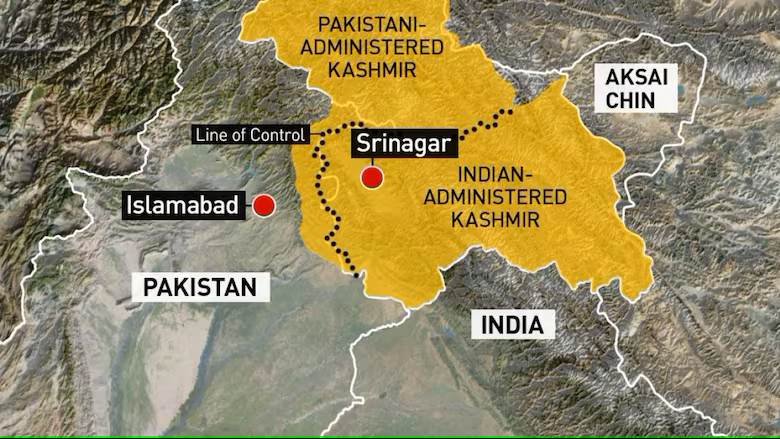
Source: BBC
The LoC stretches approximately 740 to 776 kilometres, dividing the former princely state into Indian-administered Jammu and Kashmir and Ladakh and Pakistani-administered Azad Kashmir and Gilgit-Baltistan.
The northernmost point, NJ9842, marks the end of the LoC, beyond which lies the disputed Siachen Glacier region. Over time, the LoC has become heavily militarised and fortified, with fencing and surveillance to prevent infiltration and conflict escalation.
Areas Under the LoC
- Indian-administered territories: Jammu & Kashmir and Ladakh.
- Pakistani-administered territories: Azad Jammu and Kashmir and Gilgit-Baltistan.
Explore| Comparing Rafale vs JF-17 Thunder vs F-16 Fighting Falcon: Who Holds The Upper Edge?
India's Security Measures Along the LoC
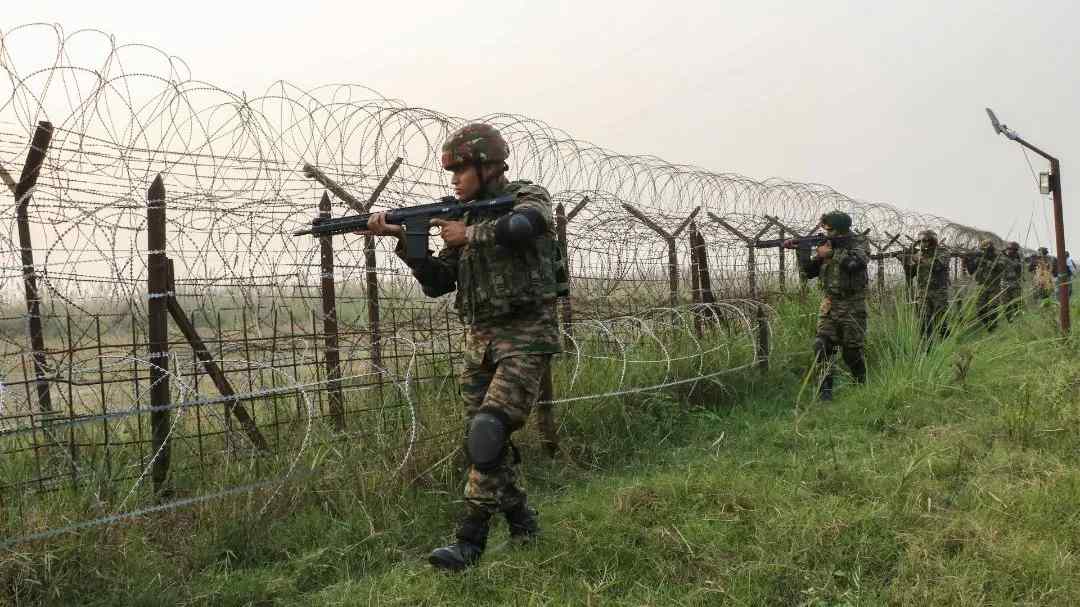
Source: Mathrubhumi English
To safeguard its borders and prevent infiltration, India has implemented several security measures:
-
LoC Fencing: A 550 km-long fence equipped with concertina wire, motion sensors, thermal imaging devices, and alarms has been constructed along the LoC to deter infiltration.
-
Military Deployment: India maintains a significant military presence along the LoC, with fortified posts and bunkers manned round-the-clock.
-
Surveillance: Advanced surveillance technologies, including drones and satellite imagery, are employed to monitor movements across the LoC.
-
Landmines and IEDs: Strategically placed landmines and improvised explosive devices serve as deterrents against unauthorized crossings.
-
Civilian Protection: Efforts are made to protect civilians residing near the LoC, including the construction of bunkers and provision of early warning systems.
Did You Know?
-
The LoC is one of the most militarized zones globally, with frequent skirmishes and ceasefire violations.
-
Despite the 2003 ceasefire agreement, violations have occurred, leading to casualties and displacement of civilians.
-
The Siachen Glacier, located near the northernmost point of the LoC, is the highest battleground on Earth, with troops stationed at altitudes exceeding 6,000 meters.
Conclusion: Know the Difference between LAC and LOC
| Comparison | LOC | LAC |
| Full form | Line of Control | Line of Actual Control |
| Location | Three areas of Kashmir (Azad Kashmir, Gilgit and Baltistan) are occupied by Pakistan and two-thirds, Jammu, Ladakh, and the Kashmir Valley, are administered by India. (although whole Kashmir is an integral part of India) | It is scattered in three areas of northern Indian states: eastern (Sikkim, Arunachal Pradesh), western (Ladakh, Kashmir), and middle (Uttarakhand, Himachal Pradesh). |
| Appearance | It is demarcated by the military, and a lot of activities (face-to-face confrontation, firings, etc.) take place. The Indian and Pakistani armies are present here. | These are big empty regions, and nearly 50 to 100 km is maintained between the Indian and Chinese armies. |
| Area (Length) | 776 kilometres (unofficial) | 4,057 kilometres (unofficial) |
| Between | India and Pakistan | India and China |
What's Next| List of Indian Air Force Stations 2025
Comments
All Comments (0)
Join the conversation